“Walking along the twisting path you see a small, sinewy creature with brown, scaly skin sitting on a log to the right of the path. He has a sullen expression on his face as he slowly tosses a black shiny rod on a leather cod back and forth between his hands. He might be one of the Goblins you are looking for.
Will you:
Draw your sword and attack the Goblin? Turn to 286
Try to start a conversation with the Goblin? Turn to 203
Ignore him and continue walking north? Turn to 6”
The Forest of Doom – Ian Livingstone
If you were taught to read before 1995 it is very likely that those lines or similar ones are familiar to you. Although they were translated into Portuguese back then, the green covered books of the Fighting Fantasy series were a huge part of my childhood. I remember clearly that the first one that came to our house was The House of Hell, I was almost out of primary school and it was bought by my older brother. Being an avid reader from an early age, I took over his collection a few years later and combined it with my own. Although I didn’t get them all, especially because from the 59 published between 1982 and 1995, only 38 were translated into Portuguese, but I still had quite the collection.
But why were these books placed above others? Why were they so special? And why on earth am I writing a considerably large piece about them?
The latter is the easiest one to answer, because they are games, there are video games about them and they influenced the industry and us as gamers. As for the other questions, we’ll have to take the long route for that.
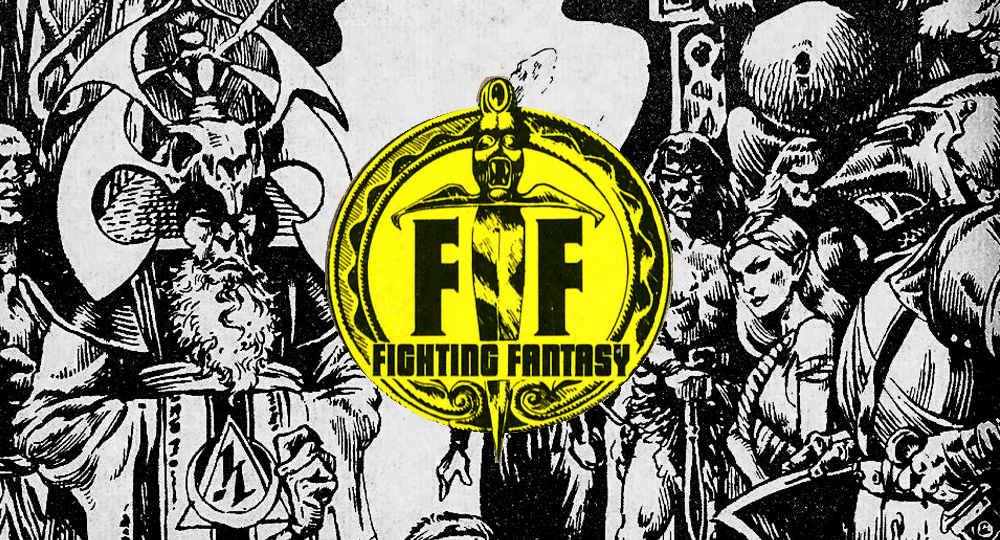
Curious about the subject of game books you enter the library, cobwebs and dust cover the books and scrolls, pieces of melted wax stain the tables, the smell is what you expected, old and knowledge. You pick a chair at an empty desk and clean it with your sleeve; you go through the shelves and bring an armful of scrolls and a small book, place them on the table and look out the window. The sun is still up, you open the biggest one and start to read…
We’ll start where every Fighting Fantasy adventure starts, at the beginning, when two young adventurers named Ian Livingstone and Steve Jackson created the Games Workshop (yes, that Games Workshop) in 1975. From there the two manufactured and sold classic games and other products, but it was through Dungeons and Dragons that they really hit their stride towards success.
Having secured not only D&D’s exclusive rights in Europe, but other RPGs as well, along with their shop, the White Dwarf magazine and Games Day conventions, Jackson and Livingstone started sowing the interest in the hobby of Pen and Paper and table top role playing games.
Legend says that in one of these conventions Geraldine Cooke, editor at Penguin Books was quite surprised with the amount of people that gathered to play these games, and how deeply into it they all were. She asked Jackson and Livingstone to write a book about the games, a sort of explanation on the phenomenon crossed with instructions for beginners. Eventually, and here details are fuzzy like in many legendary tales, the idea of a Game Book was presented, and after many discussions the project was given authorization. Game books were not invented by these two prodigies of gaming, there were already books where the reader could make choices as far back as the 1940’s and the Choose Your Own Adventure series was already popular since 1979. There were even spin offs with characters such as James Bond and Doctor Who. But still it was difficult for Penguin Books to accept it as it was not what they ordered and the concept was strange for those that didn’t know it. How to edit a book that was not linear? In any case it was accepted and the writing dynamic duo got to work on The Magic Quest.
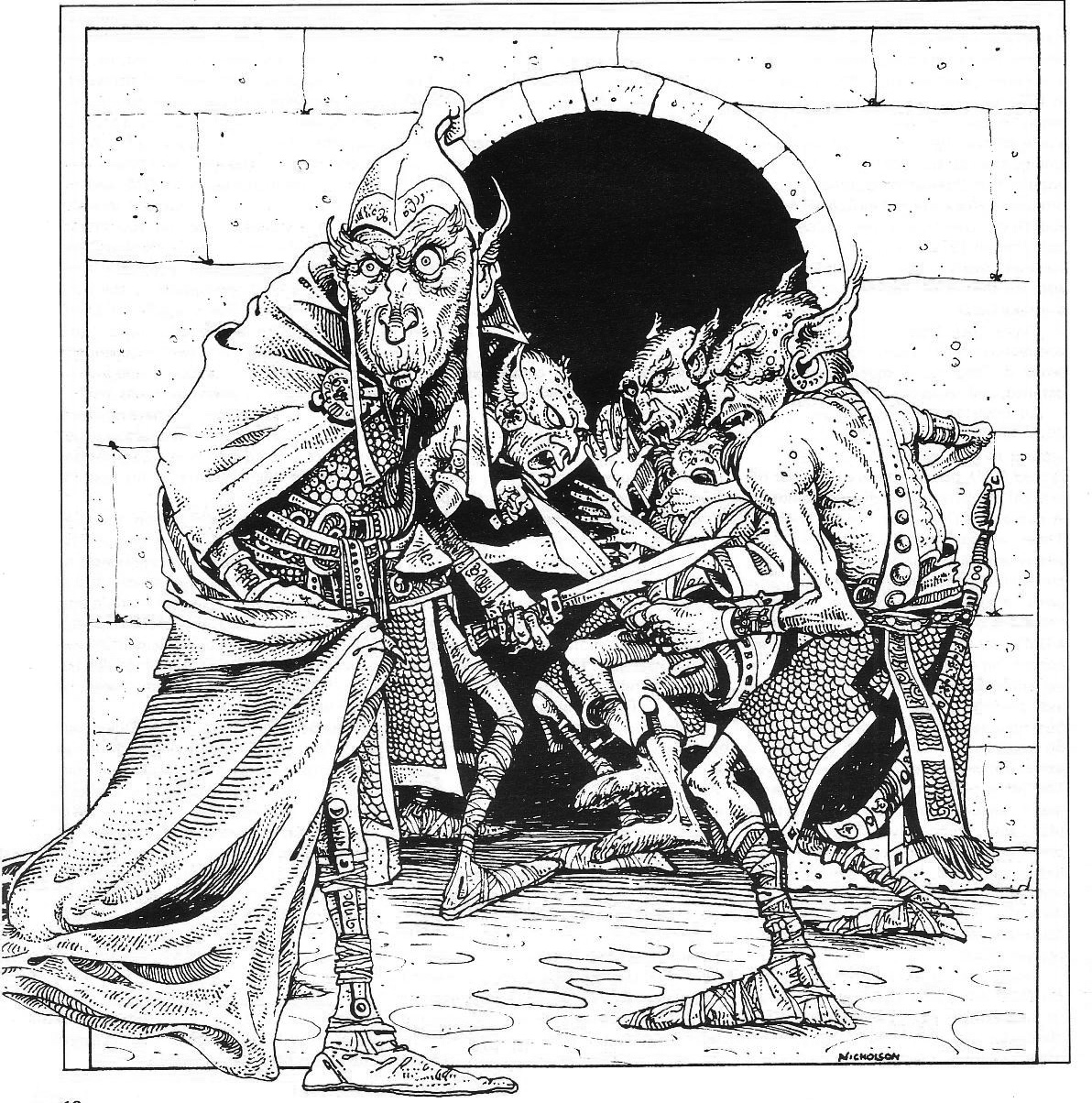
Eventually the project was taken from Geraldine Cook and passed to Puffin Books a publisher within Penguin but aimed at children books which were considered the target audience for Fighting Fantasy.
Several problems arose in the actual production of the book, as anyone can imagine writing a linear book is hard enough, let alone writing a non-sequential one in tandem with another author. Nevertheless it was done, The Magic Quest became The Warlock of Firetop Mountain and Fighting Fantasy was off to a thunderous success.
It was with the combination of Puffin’s publishing and advertising with playground chatter that the books started selling like crazy, at a point that it was proposed that they would publish one per month. However this was an extremely large undertaking for the two authors because it was not only the book writing that they had to be concerned about but also the Games Workshop, the shop and their own regular publishing, therefore choices had to be made.
You set down your scroll and look around pinching the bridge of your nose shutting your eyes to adapt them to the fading light, as you light your candle you think of what to do next, do you:
Continue to read the story of the Fighting Fantasy Books? Go to 326
Do you pick up another scroll about spin-offs? Go to 83
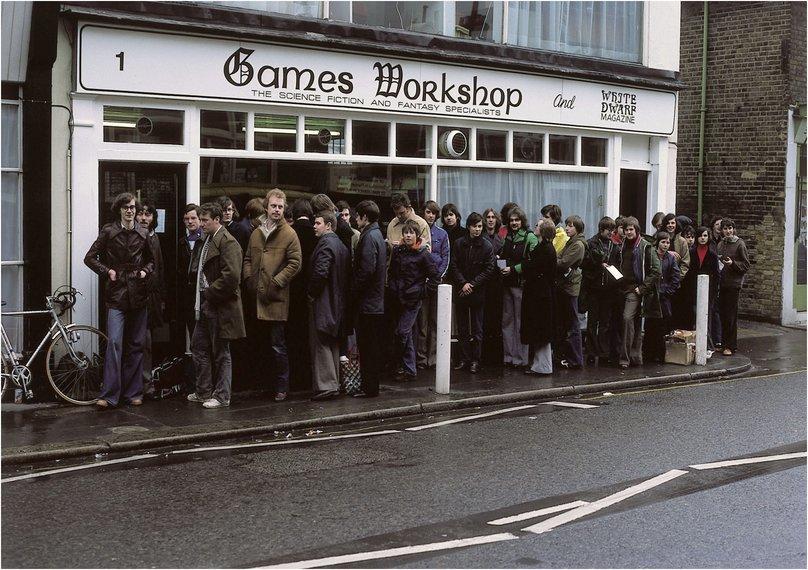
254
You cannot stop investigating, the hunger of knowledge is too strong, you pick up another scroll and strain your eyes under the faint light…
Jackson and Livingstone were never adverse to technology. They were even embracing of it as is proved by the amount of technology adaptations their works had. Not counting with the immense continuity that their Warhammer series had under the Games Workshop umbrella, the Fighting Fantasy books were the first to do the jump from the pages to the screen.
Appointment with F.E.A.R, Temple of Terror, The Warlock of Firetop Mountain, The Citadel of Chaos, The Forest of Doom, Seas of Blood and Temple of Terror were all available for the Commodore 64, ZX Spectrum and other computers of the time including the BBC microcomputer.
By using a very basic graphic design, that was forced by the technology of the age, and heavily dependent of text were not ipsis verbis transposition of the books to a computer medium but still became the first time anyone was obliged to play them as they should be played.
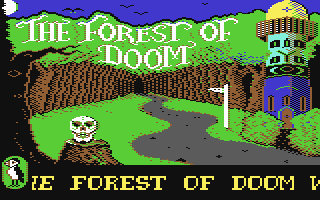
The gamebooks were fun to play, however they had one structural flaw, they depended on a player’s honesty to roll the dice and abide by their result. As far as I remember I didn’t know anyone that actually used dice while playing, or at least used them all the time. I am extrapolating an idea from my own universe but as far as I know we were the luckiest and strongest people in the world. We always won, we always had the best result ever. This was bad, but even with that cheating we still lost, we still had to backtrack or start over again and again.
The computer games were an adaptation that didn’t allow us to cheat, the dice was in the binary result translated to the screen so there was no escaping, and that was a lot more fun.
As time went by new adaptations were made, in 98 Deathtrap Dungeon was adapted to PC, The Warlock of Firetop Mountain was adapted to the Nintendo DS in 2009 as the first of an ongoing first person adventure series but wasn’t pursued by the developers, and in 2011 the original book was also adapted to the Amazon Kindle.
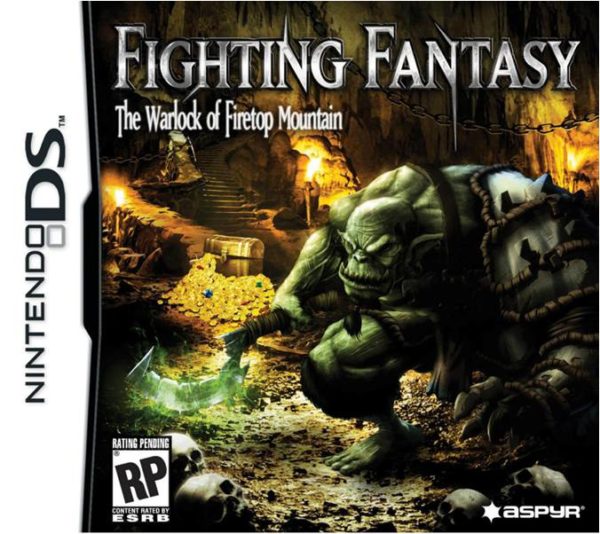
As the reading platforms changed there was also a revamping of the games to the PC and mobile. Tin Man Games managed to grab the publishing rights for a few of the Fighting Fantasy books and launched them not only for the PC but also for mobile platforms such as Android and IOS. Considering that we all carry a computer with us at all time in form of a telephone, the mobile adaptations are the best ones for the old school fans that want a touch of nostalgia but don’t want to carry around the material.
In a mobile or tablet, they allow us to play the books again, or for the first time, with a fully automated character sheet that notes down objects in the inventory and fights, leaving us with only the decision making part. They even managed to include part of the cheating as we can bookmark the pages in order to backtrack. Just in case something goes horribly wrong.
While they went with a more literal approach to the book adaptations, Inkle who had the rights for the four books of Sorcery! went into a slightly different direction.
As you read the last words your last candle burns out, but sun starts showing its rays on the horizon, you feel tired. You:
Wait for the sun to rise and read small book called Sorcery 1 and 2? Go to 7
Leave the library with plans to return another day and finish your studies? Go to 400
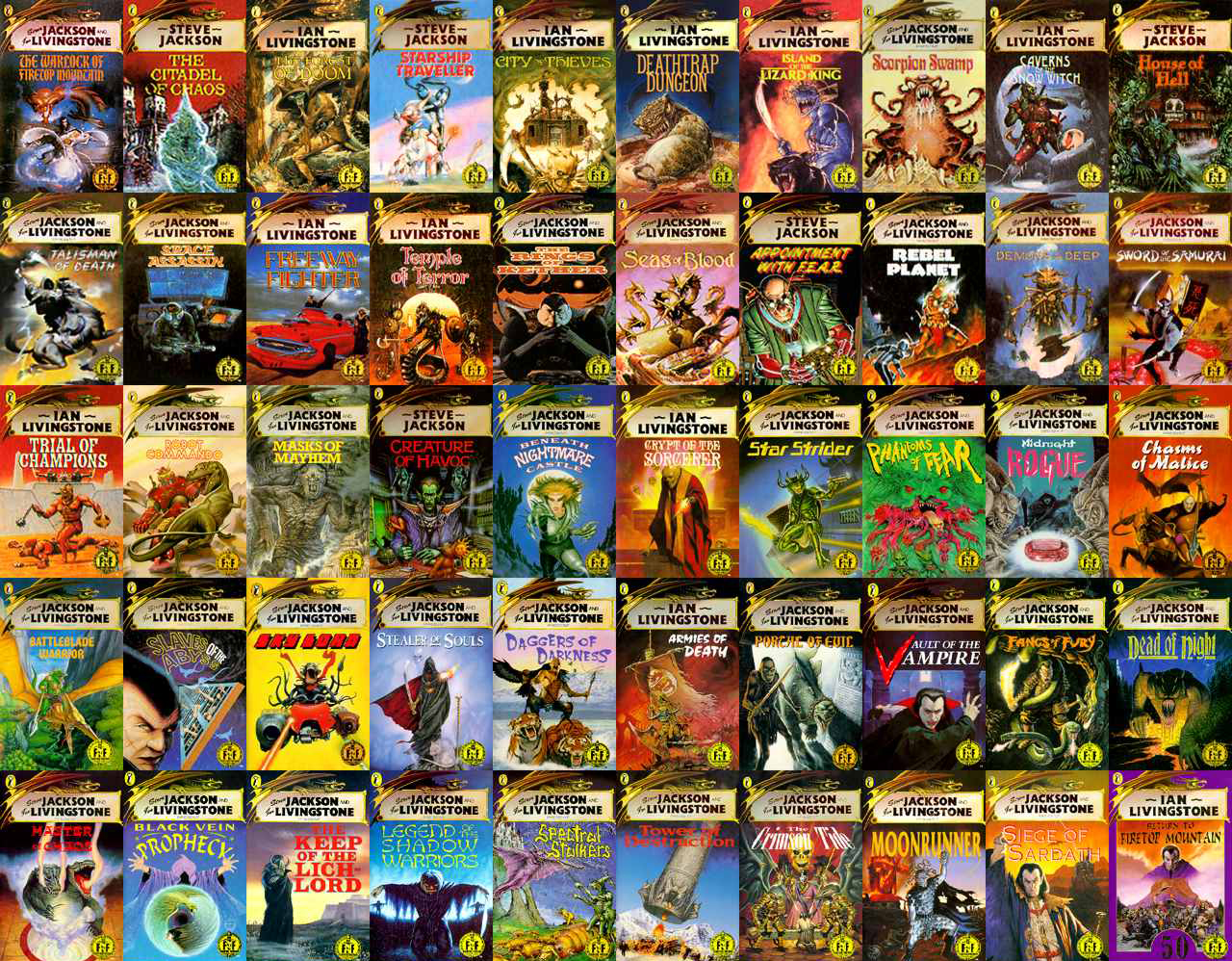
83
As you roll up the large one, you grab another with care, a sense of curiosity tingles your stomach as you do not know what will be there…
In the early stage of Fighting Fantasy books and the Games Workshop, Livingstone and Jackson also ran Warlock Magazine, a fantasy focused publication that ran for 13 issues until 1986. Quite different from now, the world without internet depended heavily on these sorts of regular, lighter issues that offered extras to the game book reader and board game player. Considering the huge market that was opening up to them and their already extensive knowledge in games, the team spread outside the books and took a few chances into other lands.
The first spin off was still a book. As the original deal was made with Geraldine Cook at Penguin books and then was passed on to Puffin, Jackson still wanted to honour the deal, so he wrote a four-part series called Sorcery! published between 83 and 85 and was aimed at an older more mature audience. In terms of complexity not content, you dirty minded people. The four books could be read individually but the objective was to go through the sequence carrying the experience, knowledge and items from the previous one over to the new one. It was different in many ways from the others, as it counted on spells that the player had to memorize in order to use, and above all it required no dice as at the bottom of each page there was an image of a dice roll so that the player could simply “flick” through a roll. (Still I’m sure everyone cheated as in the others, but it was a nice effort anyway.)
At the same time, Jackson also created Fighting Fantasy – The Introductory Role-playing Game and started giving the readers the rules and guidance to create their own adventures giving them the tools to step out of the books and go to the Pen and Paper world he was so aware of in the Dungeons & Dragons world. And he succeeded even more when he managed to put their first book in a table top with 1986’s The Warlock of Firetop Mountain. Here he managed to take the general mechanics of the book and combine them with a table top maze-like game for up to 6 players where they had to fight monsters, find treasure and keys and even investigate each other in a Cluedo system until one won.
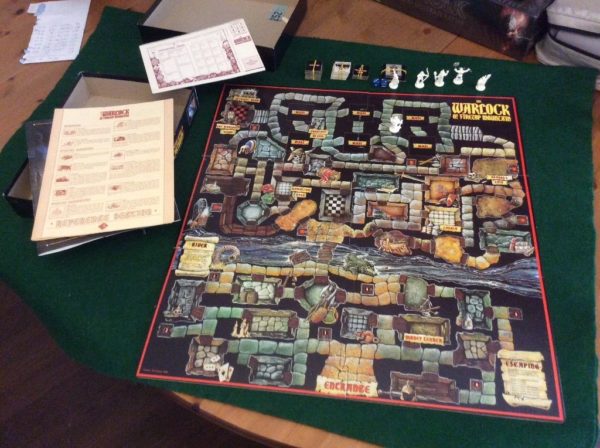
With experience gained over the years Jackson and Livingstone levelled up and gained new skills and abilities that allowed them to move forward to publishing Advanced Fighting Fantasy an extremely more in depth experience than its predecessor were the players could choose from a wider range of options in character creation and the stories in which they were involved. Although it started with a 2d6 system it eventually was adapted to d20 in 2013.
The last of the spin offs was launched in 1993, just 2 years before the last book, and was an adaptation to board game of Legend of Zagor.
However much like the books, computer games were winning the race of interactive entertainment so as sales dwindled there was no more production.
Even so, the most original spin off of all was F.I.S.T. (Fantasy Interactive Scenarios by Telephone) with Computerdial. In 1986 everyone had rotary dial phones so they came up with a model in which the typical got to 3 was replaced with dial 3 and the caller was charged by the minute of gameplay. Due to the cost and change in model they were also forced to remake the type of adventures from a more narrative and thoughtful scope to a dialogue quick thinking basis.
You light another candle and eat a piece of bread taken from your pack, you hear nothing except the wind outside and mice running around. Do you:
Pick up the strange scroll labelled new technological wonders? Turn to 254
Pick up the small book called Sorcery 1 and 2? Go to 7
Do you leave the library? Go to 400
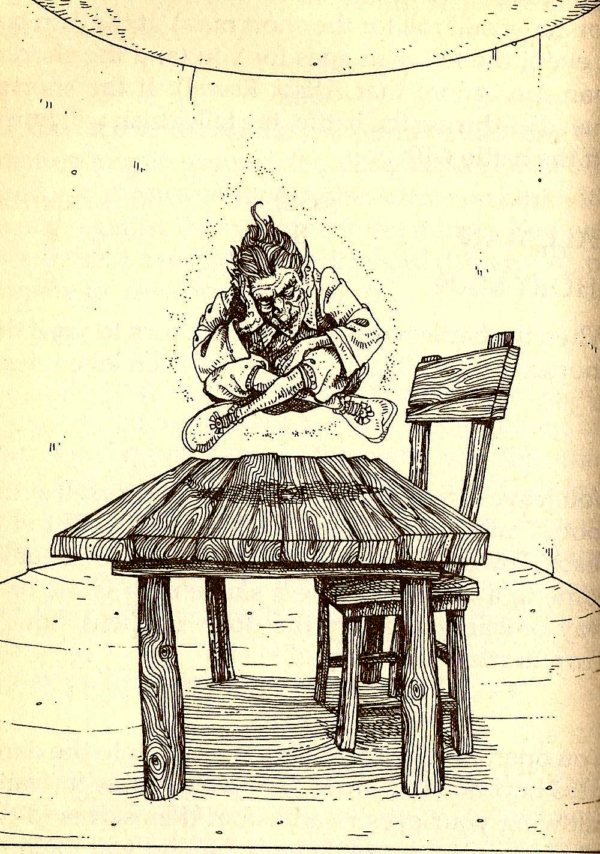
326
You pick up the scroll and look for the line where you left off for your break…
After the amazing success and several reprints of The Warlock of Firetop Mountain being issued, Jackson went on with another book The Citadel of Chaos but demand was high, and also the troubles of managing too many plates in the air at the same time.
As success grew so did the competition and requests, other publishers started doing their own gamebooks but the Fighting Fantasy name was the standard to which the others measured up to. In order not lose the quality of their work and keep up with demand Jackson & Livingston Presents was created in order to have the Fighting Fantasy name continue but written by other authors.
The first of these other authors was Steve Jackson. This may be confusing but was also a stroke of luck. Steve Jackson, the original one, had already co-written Warlock with Livingstone, the four book Sorcery Series for Penguin which was catered to a more adult crowd and was working on other projects. The second Steve Jackson, an American game designer volunteered for a book and started working on them as soon as possible, therefore when Scorpion Swamp came out under the “Jackson and Livingstone Presents” header it looked just as one more book from the original author. And although many other authors joined the team such as Marc Gascoigne, Carl Sargent and Peter Darvill-Evans to do the 59 books in the series, the creators of the series always controlled the artistic direction of every one, trying to make the whole universe connected in spite of all the different minds that created it. The majority of the titles are set in a fantasy-medieval ambience, in Allansia within the world of Titan, but others expanded to Sci-fi theme such as Starship Traveller and more contemporary settings in House of Hell.
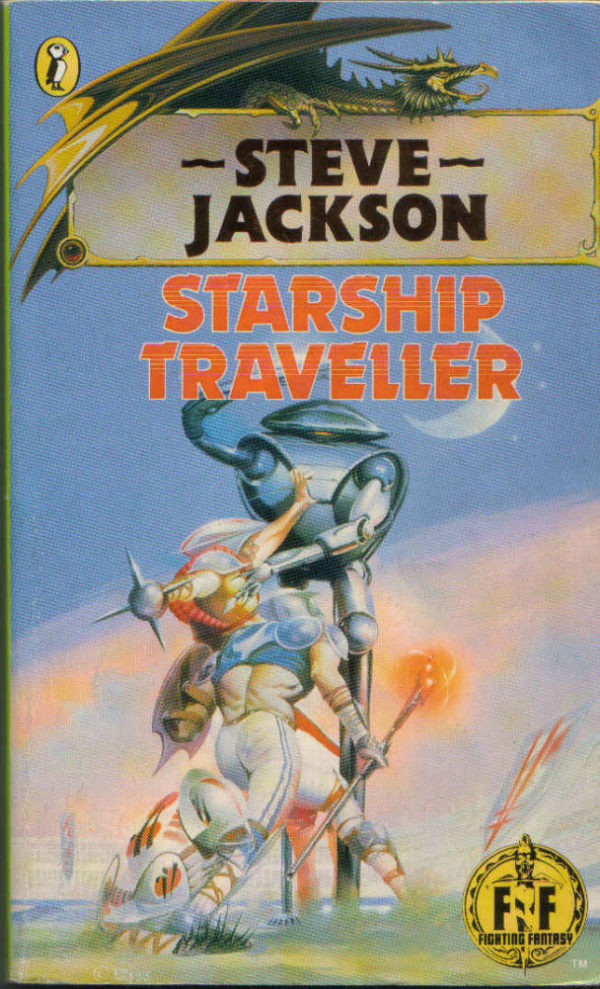
It was this diversity in choice, much like in the actual gamebooks, that kept the series running for so long. But it was also the small twists that the authors gave the books that kept them going. Although the first ones kept the same structure in which there was only one correct path and all other choices would eventually lead to a sometimes sudden death, and the Stamina, Skill, Luck combat and gaming methodology. However in games such as House of Hell a literal Fear Factor, was added, in which we the player could at any time, depending on the role of the dice and our decisions die of fright. In Starship Traveller the fourth book of the series there was not only a shift from fantasy to Sci-fi but the player controlled the main character and a crew that had individual statistics just to name a few examples. However the most innovative and risky move was probably Clash of Princes. This was a two book, two-player adventure. So one player would read a copy and a friend would read the other simultaneously influencing each other’s actions. The sheer logistics of this without internet and other technologies may be baffling but it was 1986, we had a lot more imagination and resourcefulness back then.
But the formula was made up of more than that. The Warlocks of Games Workshop could also count with amazing art to illustrate their books provided by Martin McKenna, Russ Nicholson and Ian Miller among other respected fantasy artists. All the black and white illustrations were beautiful although some could be considered slightly too graphical for the target audience, but were kept in a tasteful balance that allowed appreciation and controversy to live hand in hand.
It also helped that the books were met with some disagreement and ridiculous claims from several individuals that helped the sales as reported in Jonathan Green’s book. The Evangelical Alliance’s claim that children were interacting with ghouls and demons, and someone that called her local radio station stating her son levitated after reading one of the books, to a vicar who threatened to tie himself to the publishers’ gates until the series was banned. In spite of all this the gamebooks kept going strong because there is no such thing as bad publicity and even better to quote Livingstone in an interview: “It got children reading”.
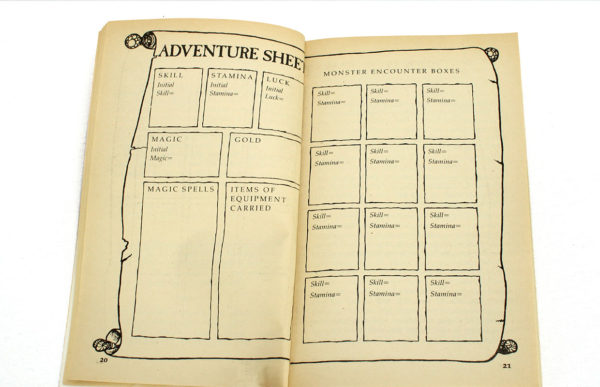
(I believe it also taught the children to cheat, as I doubt that anyone actually followed through with the dice rolls, but that’s another story.)
Time passed and entertainment habits changed especially with the increase of video and computer gaming industries among the young ones taking over books as a pastime, and the original fans, now older, probably caught in the daily work grind of adulthood lacked the time and energy for the gamebooks, so the last Fighting Fantasy Curse of the Mummy was published in 1995.
A revival came in 2002 by the hand of Wizard Books who bought the rights of the books and reissued them with a new logo to a new audience. They even managed to include a new book called Eye of the Dragon written by Livingstone himself, plus a few more until 2007 and a second wave of rebranded reprints that finished in 2012 with Livingstone’s Blood of the Zombies completely aimed to the current zombie crazed public of The Walking Dead and Resident Evil generation.
As the scroll ends you look up at the candle still lit and with hours of wax left to burn, do you:
Pick up the spin offs scroll? Turn to 83
Look at the one titled new technological wonders? Turn to 254
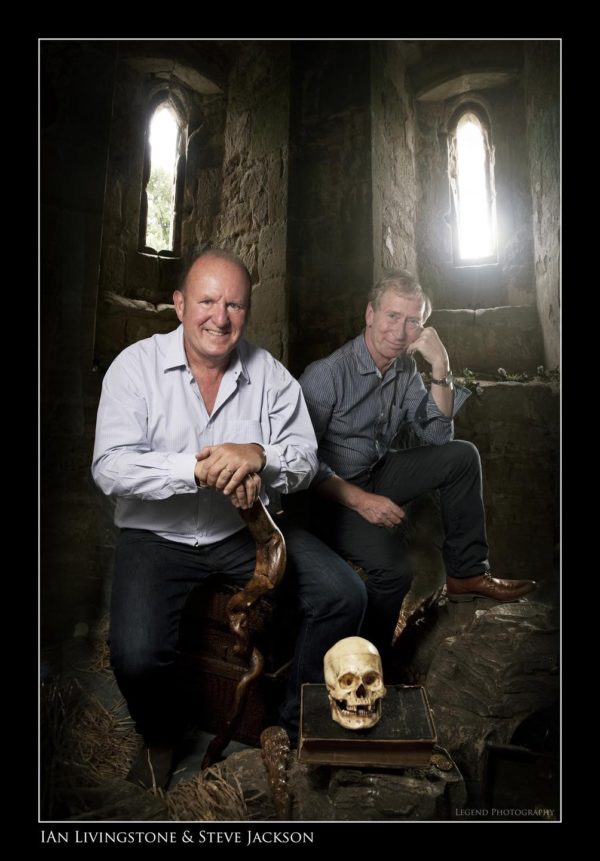
400
You stand up and start walking towards the door, you think of all you read and learned here, how two men managed to create such an enduring work that not only sustained the test of time but it also managed to overcome the test of medium, proving that most times the basis of a good game has nothing to do with imagery but with a good story and a lot of imagination.
As you close the door you look back into this place filled with history and something catches your eye, as you look at it you smile, knowing that the legacy is alive and shows no signs of stopping.













